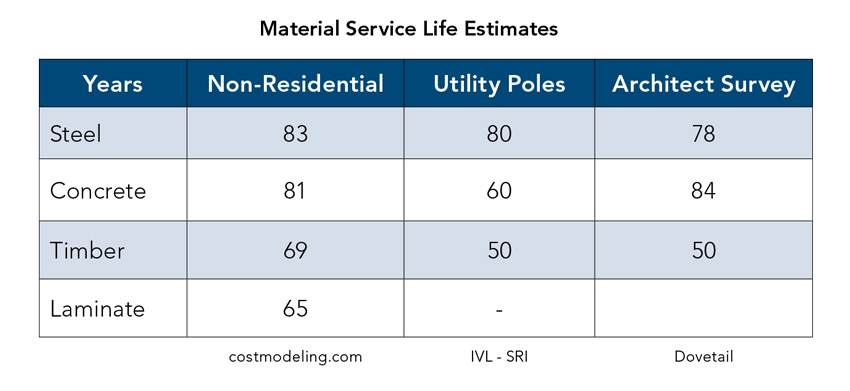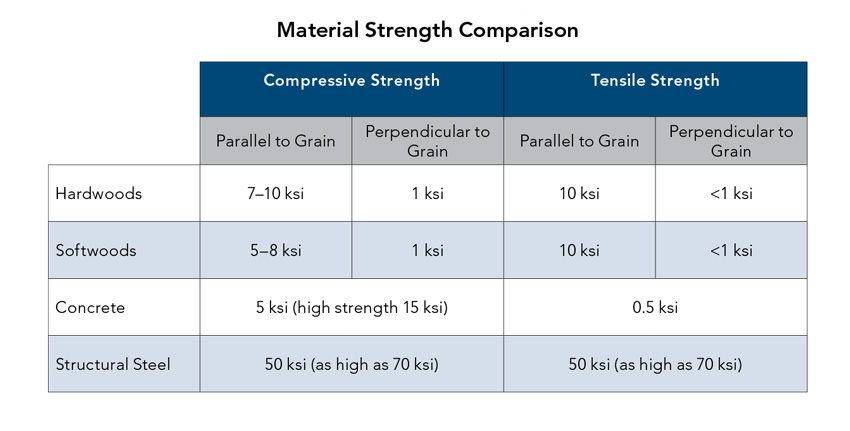Resilience: Why Material Selection Matters
Material Attributes
There is no single physical measure of resilience for a building material. When the resilience of a material is assessed, the primary attributes of the material must all be evaluated. For a structural framing material like structural steel, concrete, or wood, these include: durability, strength, elasticity, toughness, combustibility, and resistance to decomposition.
Durability
Durability is the ability of a material to withstand outside forces while sustaining minimal wear, fatigue, or damage. In a 1994 paper written by Lewry and Creswdon, several factors were identified that impact the durability of a product. These include weathering, stress, biological attack, incompatibility, and use. Lewry and Creswdon suggest that a contextual evaluation of these causes is the best way to determine the significant causes of degradation and that the best metric that could be used to measure durability is the service life of the product.
Service life estimates for framing-system materials are available from a variety of sources but follow the same general pattern as indicated below.

Steel had the highest years of service life in both nonresidential and utility pole construction when compared to concrete and wood, according to studies by costmodeling.com and IVL-SRI.
In addition, of the three materials, wood was ranked last in durability in a survey of 910 design and construction professionals conducted by FMI Management Consultants. While both concrete and steel were ranked highly, steel’s durability was considered its leading benefit.
Strength
Steel is the strongest of the typical building materials. The design strength of most hot-rolled structural steel sections in use today is 50 ksi (50,000 psi) in both tension and compression, with special applications using sections with strengths as high as 70 ksi. Compressive strength for concrete is typically between 3 ksi and 5 ksi, with some applications calling for high-strength concrete with compressive strengths as high as 15 ksi. Concrete tensile strength averages about 10 percent of concrete’s compressive strength or in the range of 0.5 ksi. The weakness of concrete in tension requires the addition of reinforcing steel in a building’s beams and columns. The compressive strength of wood varies by the variety of wood, moisture content, and whether the load is applied parallel or perpendicular to the grain of the wood. Hardwoods have compressive strengths parallel to the grain in the range of 7 ksi to 10 ksi (1 ksi perpendicular to the grain), while softwoods range from 5 ksi to 8 ksi parallel to the grain (under 1 ksi perpendicular to the grain). The tensile strength of wood perpendicular to the grain averages about 1 ksi. While wood is relatively weak in tension perpendicular to the grain, it is strong in tension parallel to the grain, exhibiting strengths in the range of 10 ksi.

The fact that the compressive and tensile strengths of structural steel are identical is a major factor in the ability of a structural steel framing system to resist and respond to extreme events. In an extreme event, unanticipated loads are often experienced by the structure. In many cases, this is not just an increase in an anticipated load, but rather the structural member unexpectedly transitions from being in compression to being in tension. Steel’s equal ability to handle compressive and tension loads helps to mitigate any failure that may result from this condition.









